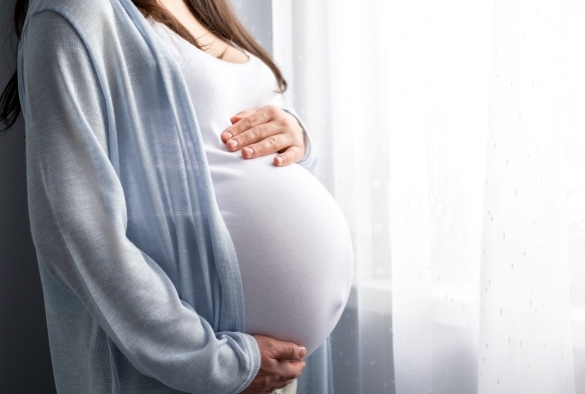University researchers investigate link between the vaginal microbiome and preterm birth

Being born too soon (preterm birth) is the leading cause of death and serious ill health in children under five. Scientists at the University of Liverpool are trying to understand why some women go into labour too early in pregnancy.
University of Liverpool researchers led by Dr Laura Goodfellow, of the Institute of Life Course and Medical Sciences and National Institute for Health and Care Research (NIHR) Clinical Lecturer, have been awarded funding from the Academy of Medical Sciences to investigate the link between vaginal yeasts, bacterial load and risk of preterm birth.
One factor is thought to be the interaction between the microbes that live in the vagina (the vaginal microbiome), the woman and her pregnancy.
“We know there is a link between the bacteria in the vagina and preterm birth, but, how and why this happens is not yet understood. Yeasts are very common in this area, but until now have been harder to study. Using new technologies at Liverpool, we have the opportunity to assess whether yeasts are the missing piece of the jigsaw puzzle” said Dr Laura Goodfellow.
Pregnant women in Liverpool have kindly donated samples of vaginal fluid. Using these, the team at Liverpool previously found that a higher amount of bacteria, particularly of the type called Lactobacillus iners, is associated with preterm birth. Other research studies have also found this bacteria to be associated with preterm birth in some, but not all, women.
Thrush, a vaginal yeast infection, affects about 1 in 4 pregnant women but the role in women at risk of preterm birth has been less thoroughly studied. The team, led by Dr Laura Goodfellow with support from the Microbiome Innovation Centre, have been awarded funding from the Academy of Medical Sciences to assess the amount and types of yeast present in the vaginal fluid of the pregnant women of Liverpool. The project will look at whether yeasts may be the link between why some women with Lactobacillus iners have lots of bacteria present, and others do not. The team will assess the type of yeasts and how this relates to bacterial load and the risk of preterm birth. Cell systems will be used to study the interaction between yeasts, bacteria and vaginal inflammatory cells in greater detail.
Find out more about the Microbiome Innovation Centre and how we work with researchers and companies.